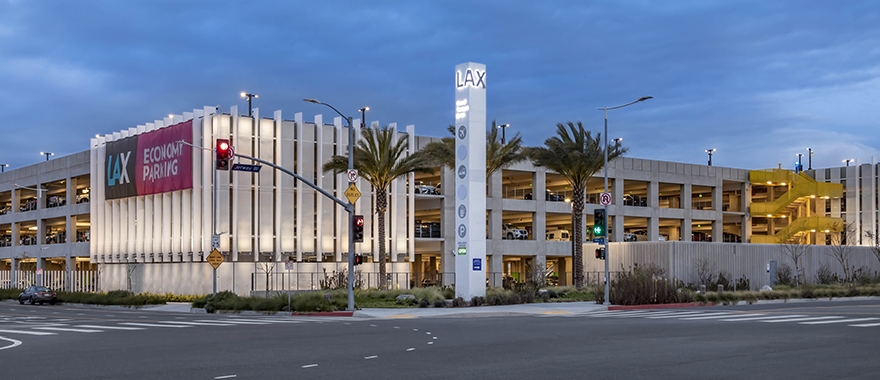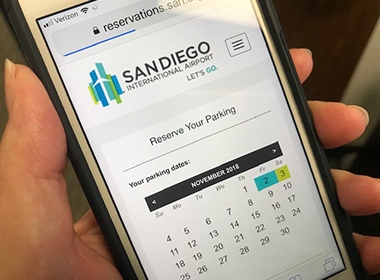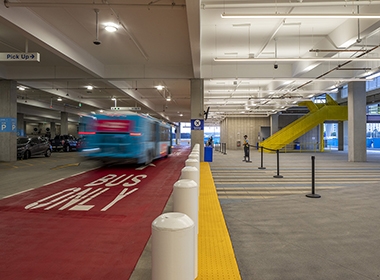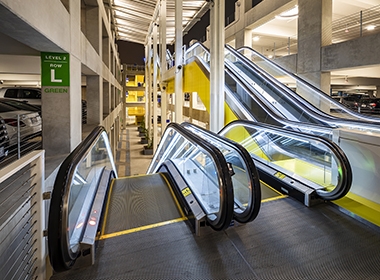Top 5 Trends Airports Are Using to Improve Parking

As airports are constantly evolving, careful consideration of parking options is critical not only to elevating the passenger experience, but also to preserving and improving valuable revenue streams. Whether it’s designing a new parking facility with the latest technology and amenities or upgrading and renovating existing facilities to integrate more effectively with the overall passenger experience, parking provides airports with opportunities to improve operational efficiency, drive revenue and meet sustainability goals.
As each airport is unique, with different layouts, passenger demographics and densities, there is no one-size fits all solution when it comes to parking design. Improving the user experience starts with observing the common traveler for each airport, identifying the passenger’s decision points along their travel to their gate and focusing on solutions that reduce stress by making decisions feel more intuitive.
Understanding this journey also means understanding different traveling personas and what is important to each when it comes to their parking experience. For example, business travelers tend to be connected, efficient and familiar with their airport, while families need more assistance with wayfinding and convenience while juggling small children and luggage. By taking these different behaviors into account, we can design flexible solutions that meet a wide range of passenger needs while also achieving airport goals.
With this in mind, below are 5 trends impacting functional parking design at airports:

1. Advance reservation & pay systems: Traveling is a stressful experience, and figuring out where to park, how much it will cost and worrying about whether space will be available during peak travel times only adds to that stress. An advance reservation system can reduce or even eliminate this concern by guaranteeing a space, and even prepaying the parking fee.
Airports such as San Diego International are leveraging reservation programs to create loyalty programs and offer discounted rates to those who book in advance, which creates value for the customer while offering a means to compete with off-site parking. An advanced reservation system also provides data that can help airports manage their parking inventory more efficiently.
2. Parking guidance systems: Airports often have large parking facilities that can feel like a maze, and high demand can create frustrations as travelers lose precious time circling and idling as they search for an open space. Dynamic signage that indicates available spaces on each level can allow passengers to bypass entire levels, while individual space indicators tell drivers which aisles to skip and which will have an open space. This can dramatically reduce the time it takes for travelers to park, leaving more time to navigate security and get to their gate.
This technology can be integrated into both new and existing facilities. In fact, new facilities, such as the Economy Parking Structure at Mineta San Jose International and the Multimodal Complex at Pittsburgh International, can be catalysts for integrating new and updated technology across an airport’s existing parking assets, creating a smoother user experience while also generating more revenue for the airport. At LAX, this approach drove a 40% increase in revenue and saved $3.7 million in the first 15 months of operation.

3. Connectivity: Curb congestion and dramatic increases in ride sharing have led some airports to explore turning parking structures into mobility hubs. In an effort to ease congestion through the infamous “U” shaped Central Terminal Area at LAX, the Economy Parking Structure at LAX was designed with an expansive pick-up and drop-off area that will be accessible via an Automated People Mover when it opens in 2025, eliminating the need for travelers to sit in traffic in the central terminal. Until then, a complimentary shuttle carries travelers to and from the terminal.
In addition to space for rental cars and public parking, the new Multimodal Complex at Pittsburgh International will provide transit connections and ridesharing pick up and drop off while reducing walking time from curb to gate by half a mile.
4. EV charging stations: Meeting sustainability goals has become an increasingly important initiative for airports. EV charging infrastructure in parking facilities can aid airports in achieving those goals while also providing an additional revenue stream. EV charging plays a role in LAX’s sustainable action plan, “Boldly Moving to Zero,” and has led them to being ranked as the most EV-friendly airport in the US with 1,250 parking stalls equipped for EV charging.

5. Amenities: Sometimes the small things can make a big difference, especially to the weary, frazzled traveler. How many times have you fought with your luggage while trying to get it from car to check in? Those who travel with pets have the added stress of managing potty breaks for two different species, only one of which gets guaranteed a bathroom. They may seem like necessary evils that are just part of traveling, but they don’t have to be.
In keeping with the goal of offering a world class guest experience at LAX, the Economy Parking Structure includes escalators and pet relief areas as passenger amenities, giving travelers a means to manage their luggage and their pets with less stress. The escalators have the secondary benefit of acting as wayfinding devices that guide users to safe pedestrian paths within the structure, reducing conflicts between people and cars. Public art, valet parking, vending machines and FIDS, can also serve as valuable amenities.
As airports evolve, technology and design choices can adapt to their changing needs and those of their passengers while also improving operational efficiencies and bringing benefits directly to the airport.

